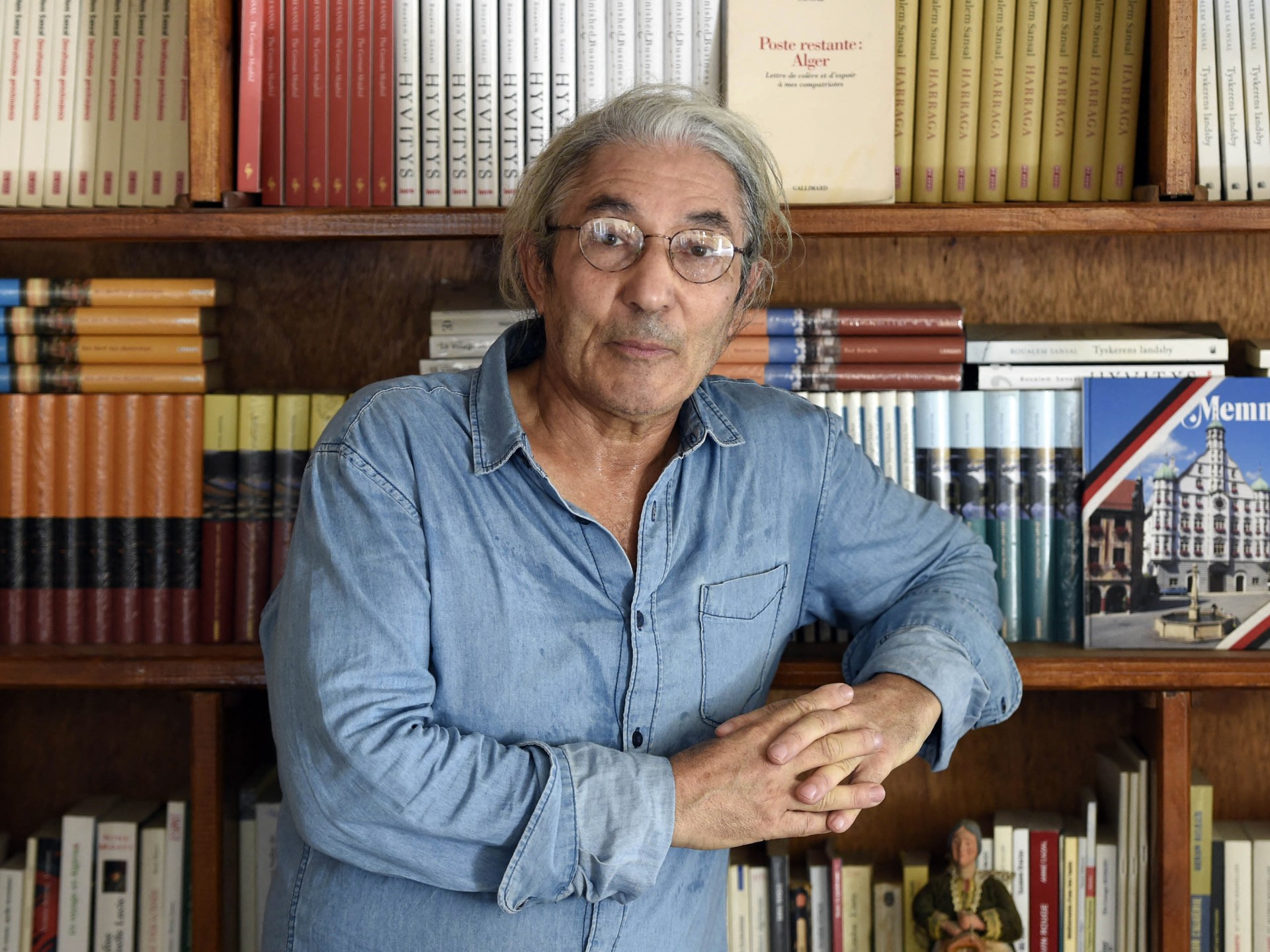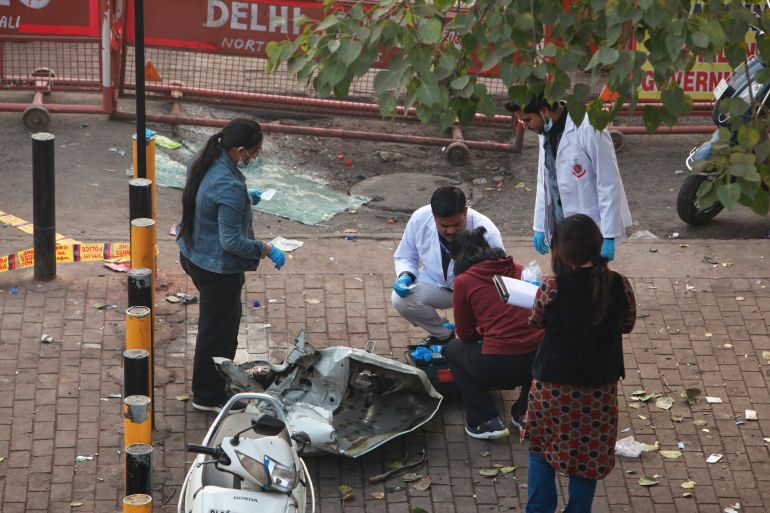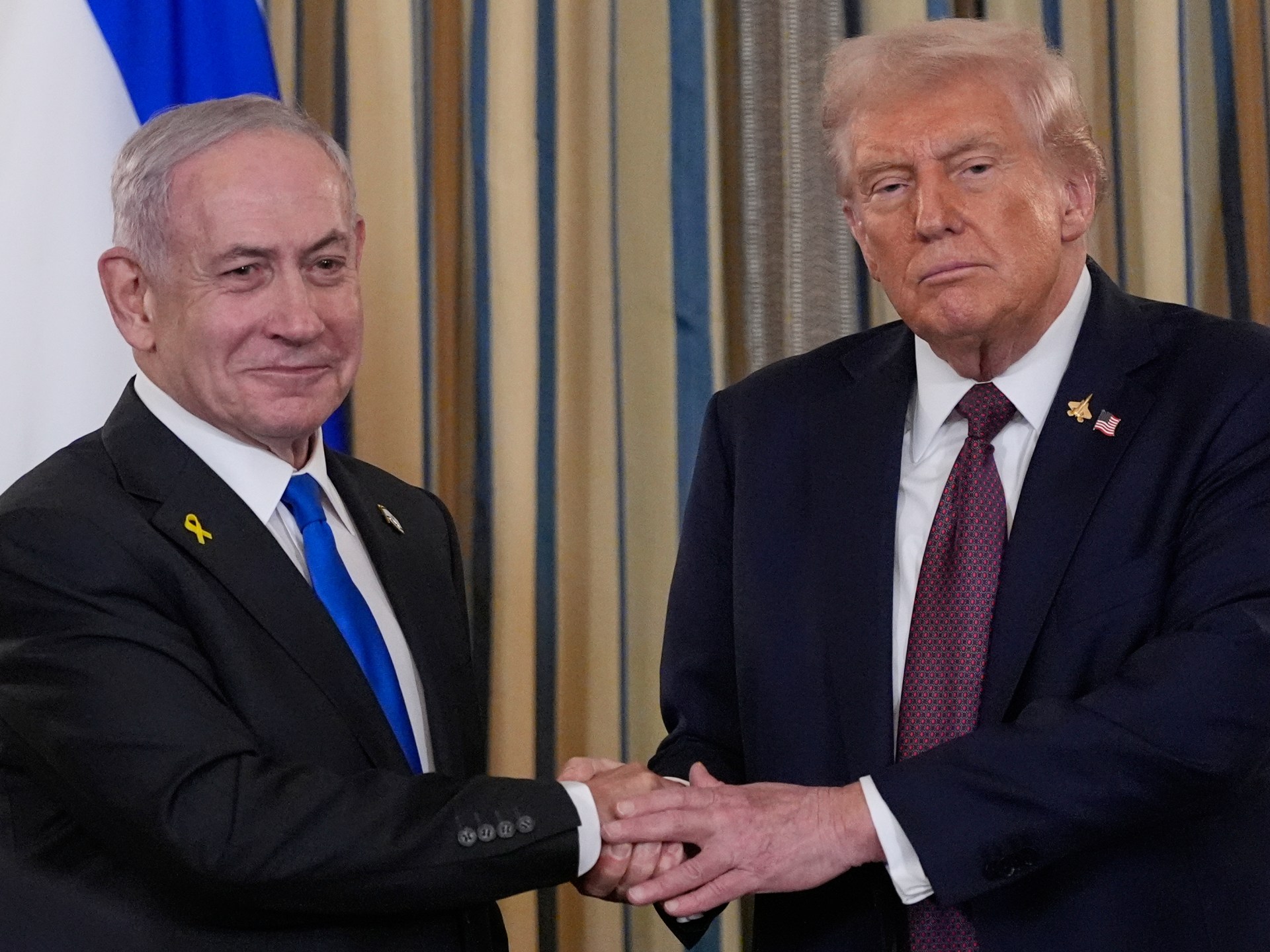The fight over the budget has now moved to the US House of Representatives, a day after the Senate cleared a stopgap funding measure to end the longest government shutdown in the country’s history, as House Democratic leaders are encouraging members to vote against the bill.
The Republican-led measure was passed in the Senate on Tuesday with the support of eight senators from the Democratic caucus who broke ranks with the party. The stopgap package, which will keep the government running until January 30, did not include funding for healthcare subsidies – which is at the heart of the political impasse that has gripped the US since October 1.
Recommended Stories
list of 3 itemsend of list
Top Democrats, including Minority Leader Hakeem Jeffries, are seeking an amendment to the bill to extend healthcare subsidies under the Affordable Care Act (ACA), which benefits some 24 million Americans.
“We’re not going to support a partisan Republican spending bill that continues to gut the healthcare of the American people,” Jeffries said in a news release issued by his team on Tuesday evening.
If the Republican-controlled House passes the bill on Wednesday, it will go to President Donald Trump to be signed into law.
So what are the Democrats proposing, and will the House pass the bill ending 42 days of shutdown?
What are Democrats demanding?
Jeffries and other Democratic lawmakers unveiled a proposed amendment to the bill that would call for a three-year extension of subsidies to the ACA, which is due to expire at the end of the year, to make health insurance coverage more affordable.
“We’re going to continue the fight to extend the Affordable Care Act tax credits. And if it doesn’t happen this week, next week, this month, next month, then it’s the fault of Donald Trump, House and Senate Republicans who continue to make life more expensive for the American people,” Jeffries said on Tuesday night.
The ACA was first launched in 2010, informally known as ObamaCare, under then-President Barack Obama. While the act affected all aspects of the healthcare system, the main change was the introduction of a regulated health insurance marketplace for those who are uninsured to access health insurance.
In 2021, then-President Joe Biden expanded the tax credits under the American Rescue Plan Act, an economic stimulus package, which made healthcare coverage more affordable for families and those with higher incomes in response to the COVID-19 pandemic.
In 2022, the tax credits were extended under the Inflation Reduction Act under the Biden administration. It is those subsidies that will expire at the end of the year unless the Republicans agree to the Democrats’ demands.
However, on Wednesday morning, the Republican-majority House Rules Committee voted to reject an amendment to the bill that would later be voted on to extend enhanced healthcare subsidies for three years.
And Trump has shown no signs of giving concessions on the issue. Last week, he proposed to send ACA subsidies directly into people’s bank accounts.
“I am recommending to Senate Republicans that the Hundreds of Billions of Dollars currently being sent to money sucking Insurance Companies in order to save the bad Healthcare provided by ObamaCare, BE SENT DIRECTLY TO THE PEOPLE SO THAT THEY CAN PURCHASE THEIR OWN, MUCH BETTER, HEALTHCARE, and have money left over,” he posted on his Truth Social platform.
In July, Trump and Congress cut Medicaid funding by $930bn over the next decade as part of his “Big Beautiful Bill”. Medicaid is the biggest government-run health programme and provides care to low-income people.
How might the collapse of the subsidy impact individuals?
According to the healthcare research nonprofit, KFF, if ACA subsidies are not extended, people who are enrolled in the subsidised programme are estimated to pay “more than double”.
Annual premium payments for ACA enrollees would rise from $888 in 2025 to $1,904 in 2026.
Christine Meehan, a 51-year-old hair stylist from Pennsylvania who depends on the marketplace health insurance, told The Associated Press that her $160 monthly plan will increase by about $100 next year.
How has the fallout of the Senate vote played out?
Eight senators, seven Democrats, one independent, defected to vote for the funding bill, which does not include healthcare subsidies. Republicans say the issue will be decided in another vote in December.
The passage of the bill required Democratic support, as Republicans were seven short of the 60 votes required for the legislation to pass. Democratic Senators Dick Durbin, John Fetterman, Catherine Cortez Masto, Maggie Hassan, Tim Kaine, Jackie Rosen, and Jeanne Shaheen voted along with independent Senator Angus King of Maine.
Now, the progressive wing of the Democratic Party is calling for the Senate Democratic leader, Chuck Schumer, to step aside after blaming him for allowing the Democrats to cross-vote.
“He’s the leader of the Senate. This deal would never have happened if he had not blessed it. Don’t take my word for it. Take the word of other senators who are saying that they kept Senator Schumer in the loop the whole time,” Democratic Representative Ro Khanna told CBS News.
“Schumer is no longer effective and should be replaced,” Khanna wrote on X on Monday, joining several Democratic leaders from the progressive and left wing of the party.
Massachusetts Senator Elizabeth Warren said on Tuesday that “The American people asked us over and over to fight for healthcare and to lower our costs overall”.
“Obviously, that broke apart at the end. Our job is to deliver for the American people. We need to do that more effectively,” Warren added, declining to say whether she had confidence in Schumer.
So far, a handful of senators have called on Schumer to resign for allowing the bill to pass on his watch.
What was agreed in the funding deal?
In the compromise legislation passed on Tuesday, it was agreed that all federal workers, who had been working unpaid, would be paid during the shutdown. According to the Bipartisan Policy Centre, a US nonprofit, at least 670,000 federal employees have been furloughed, while about 730,000 are working without pay.
Funding for the Supplemental Nutrition Assistance Programme (SNAP), which provides food aid for about 42 million Americans, will be extended until next September, according to the bill.
For air controllers, who are classified as essential workers and did not receive their pay, facing staffing issues that led to 10 percent of flights being cancelled, Transport Secretary Sean Duffy said workers will receive 70 percent of their back pay within 24 to 48 hours.
The remaining 30 percent will arrive about a week later, he added on Tuesday.
What happens next?
With the Republicans holding a slight majority in the House of Representatives, the bill is likely to pass during Wednesday’s vote, which will take place as early as 4pm in Washington, DC (21:00 GMT).
In the 435-member House, Republicans control 219 seats and Democrats, 214. To pass a bill, a simple majority is needed, which in this case would be 218 votes.
Democrats are expected to vote against the bill nonetheless.
Before the vote, Republican House Speaker Mike Johnson called on Democrats to “think carefully”.
“My urgent plea of all my colleagues in the House – that means every Democrat in the House – is to think carefully, pray and finally do the right thing,” Johnson told reporters.
But Democrat House Minority Whip Katherine Clark recommended that her colleagues vote ‘no’ to the bill, according to The Hill, a news outlet.
“This does not have to happen to the American people. This is a choice,” Clark told the Rules Committee.
“Democrats have been presenting off-ramps all year. We’ve been giving you a chance to reverse course day after day,” Clarke added.





